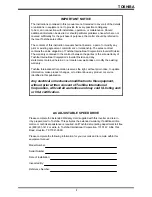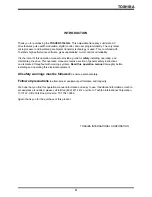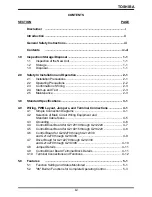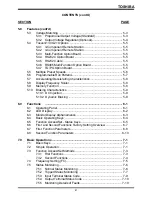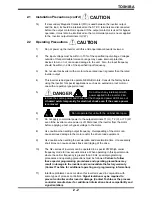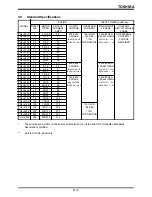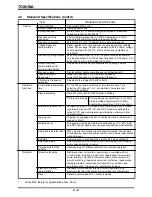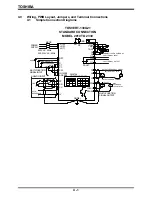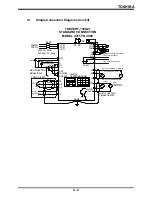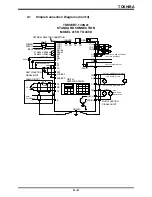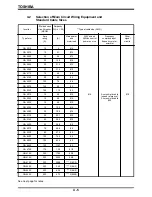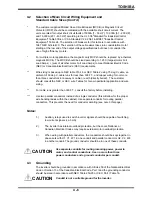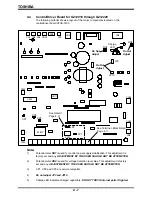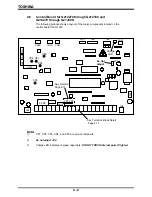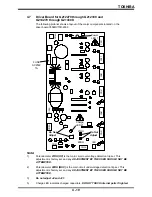
TOSHIBA
2.0
Safety in Installation and Operation
2.1
Installation Precautions
1)
Install in a secure and upright position in a well ventilated location that is out
of direct sunlight. The ambient temperature should be between -10° C and
40° C (up to 50° C when not enclosed in a cabinet).
2)
Allow a clearance space of 4 inches (10 cm) for the top and bottom and
2 inches (5 cm) on both sides. This space will insure adequate ventilation.
Use care not to obstruct any of the ventilation openings.
3)
Avoid installation in areas where vibration, heat, humidity, dust, steel particles,
or sources of electrical noise are present.
4)
Adequate working space should be provided for adjustment, inspection and
maintenance.
5)
Adequate lighting should be available for troubleshooting and maintenance.
6)
A noncombustible insulating floor or mat should be provided in the area
immediately surrounding the electrical system where maintenance is required.
7)
Always ground the unit to prevent electrical shock and to help
reduce electrical noise. A separate ground cable should be run
inside the conduit with the input, output, and control power
cables (See Grounding Section 4.3).
The metal of the conduit is not an
acceptable ground.
8)
Connect three phase power of the correct voltage to input terminals L1, L2, L3
(R, S, T) and connect three phase power from output terminals T1, T2, T3
(U, V, W) to a motor of the correct voltage and type for the application. Size
the conductors in accordance with
Selection of Main Circuit Wiring Equipment
and Standard Cable Sizes
Section 4.2.
9)
If conductors of a smaller than recommended size are used in parallel to share
current then the conductors should be kept together in sets i.e. U1, V1, W1 in
one conduit and U2, V2, W2 in another. National and local electrical codes
should be checked for possible cable derating factors if more than three power
conductors are run in the same conduit.
10)
Install a molded case circuit breaker (MCCB) between the power source and the
inverter. Size the MCCB to clear the available fault current of the power source.
11)
Use separate metal conduits for routing the input power, output power, and
control circuits.
12)
Installation of inverter systems should conform to the
National
Electrical Code
,
regulations of the
Occupational Safety and Health Administration
, all national,
regional or industry codes and standards.
13)
Do not connect control circuit terminal block return connections marked CC to
inverter earth ground terminals marked GND(E). See
Simple Connection
Diagrams
Section 4.1 and
Terminal Connections and Functions
Section 4.10.
2 - 1
CAUTION
Summary of Contents for TOSVERT-130G2+
Page 112: ...TOSHIBA 10 6 Schematics 10 17 ...


